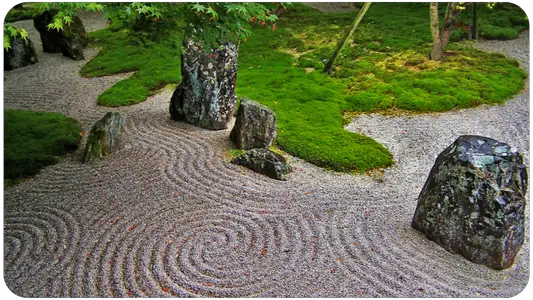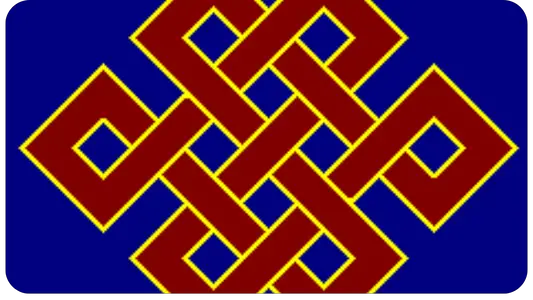The Risshū (Jap. 律宗; transl. roughly "school [shū] of rules of conduct [ritsu]; Vinaya school") is a Japanese school of Buddhism that arose during the Nara period. It has been able to survive as an independent school to the present.
History
The Chinese precursor of the Risshū, the Lüzong (Chinese 律宗, pinyin Lǜzōng, W.-. G. Lü-tsung), was based on the Mahayana Vinaya and founded by Dao Xuan (596-667; 道宣, dào xuān, Tao-hsüan; Jap. Dōsen) and is commonly counted among the so-called 13 great Buddhist schools of China (十三宗, shísān zōng).
The introduction of the Risshū in Japan in 753 was motivated, just like its foundation in China, by the need to establish clear rules for the behavior of Buddhist monks, and in particular to regulate questions concerning their ordination.
This had become necessary because a lack of clarity on these issues threatened to compromise the established schools and their teachings by a spread of moral laxity, arbitrariness in Buddhist matters, and greed for power that was found to be intolerable.
In Japan, the Risshū was closely linked to political interests from the beginning, as the rulers were unwilling to tolerate the uncontrolled growth of both power and the number of monks, who were not required to pay taxes or perform servitude.
Finally, after more than a century of its own domestic attempts at regulation (including in the Taika Reform), Shōmu-tennō sent representatives of Hossō- and Sanron-shū, Eiei (栄叡; ?-749) and Fushō (普照; 8th century), to China in 733 to invite ritsu teachers to Japan.
In response to this request, Dao Xuan came first. Then, in 753, the famous Ritsu teacher Jian Zhen (?-763; jap. Ganjin) followed after four previously unsuccessful attempts to cross, and is considered by the Risshū's own tradition to be its true founder.
He was received with the highest honors at the imperial court. At Tōdai-ji, an ordination platform (戒壇, kaidan) was established in 754 to represent all six Nara schools. Ganjin ordained Shōmu there that same year, as well as 400 laymen and 80 monks.
Ganjin was eventually appointed Daisōjō (roughly, "Grand Rectifier," one of the highest offices in state Buddhism at the time) and in 759 built Tōshōdai-ji, which he made the center of ritsu studies and where he also received permission to establish his own ordination platform.
Ordination platforms were also established in 761 at Kanzeon-ji in Dazaifu and at Yakushi-ji in Shimotsuke Province. Together with those at Tōdai-ji and Tōshōdai-ji, these controlled all ordinations in Japan until the Heian period, when Saichō was allowed to establish his own Tendai Mahayana ordination platform on Mount Hiei in 822.
With the loss of its monopoly, the Risshū experienced a sharp decline in the following century and was on the verge of extinction as a lineage of succession by the middle of the 10th century.
One of the first renewers was Jitsuhan (実範, also Jippan; ?-1144), but his tradition did not prove historically successful.
Much more successful was the tradition of syncretism of ritsu and the teachings of Shingon-shū begun in the Kamakura period, a movement that began under Eison (叡尊, also Eizon; 1201-90) and was known as Shingon-Ritsu (真言律) and Shingon-Risshū (真言律宗) became known and reached out to the general population, including peasants and even members of the Hinin class for the first time, on a previously unimagined scale.
The center of Shingon Ritsu studies became the Saidai-ji temple, which had about 1,500 branch temples at the time of Eison's death.
Eison's best-known disciple was Ninshō (忍性; 1217-1303; also Ryōkan (良観)), who had made a name for himself especially through his extensive social activities (such as building hospitals and bridges) and his willing acceptance of high honorary offices during his lifetime (for which he was sharply criticized, especially by Nichiren).
In 1261, with the help of the Hōjō regents, he restored Gokuraku-ji in Kamakura.
The last great reviver of Shingon ritsu was Onkō (飲光; 1718-1804; also Jiun (慈雲)) during the Tokugawa period.
A different and distinct tradition of ritsu teaching was introduced into Kyōto from China in the 13th century. First, this was done by Shunjō (俊芿; 1166-1227) in 1211, who, with the help of the Hōjō, built the Sennyū-ji temple in Kyōto.
The second transmission occurred through Donshō (曇照; ?-1239), who built Kaikō-ji in Kyōto in 1228 after his first return and made Sairan-ji in Dazaifu and Tōrin-ji in Kyōto centers of ritsu studies in 1240 after his second return. However, this tradition of so-called ritsu of the northern capital never became particularly popular.
Writings
The basic text is the Shibun-ritsu (四分律; transl. roughly "The Vinaya in Four Parts", the Vinaya is the collection of rules of conduct for monks), a translation of the Dharmaguptaka-vinaya of the Indian Dharmagupta school made by Buddhayaśas and Zhu Fonian in the years 412/413 (jap. Bustudayasha or Kakumyō and Jiku Butsunen).
Its four parts describe in detail, among other things, both causes and consequences, and punishments appropriate to them, of the misconduct of monks and nuns.
Second basic text became the Shibun-ritsu-gyōji-shō (四分律行事鈔), a commentary on the Shibun-ritsu by Dao Xuan.
In Shingon ritsu, in addition to the Shibun-ritsu, the Bonmōkyō (梵網經, the Brahmajāla-sūtra), the Yugaron (瑜伽論, the Yogācārabhūmi-śāstra), the rulebooks of the Sarvastivada, and the three main scriptures of Dao Xuan were used.
Teaching
Philosophically or theologically, the Risshū actually brought no innovations to Buddhism in Japan. However, their strict interpretation of the rules for religious communities was unsurpassed.
Its primacy of practice over theory in favor of a moral consolidation of Buddhist doctrine was to have far-reaching consequences for the historical development of Japanese Buddhism.





